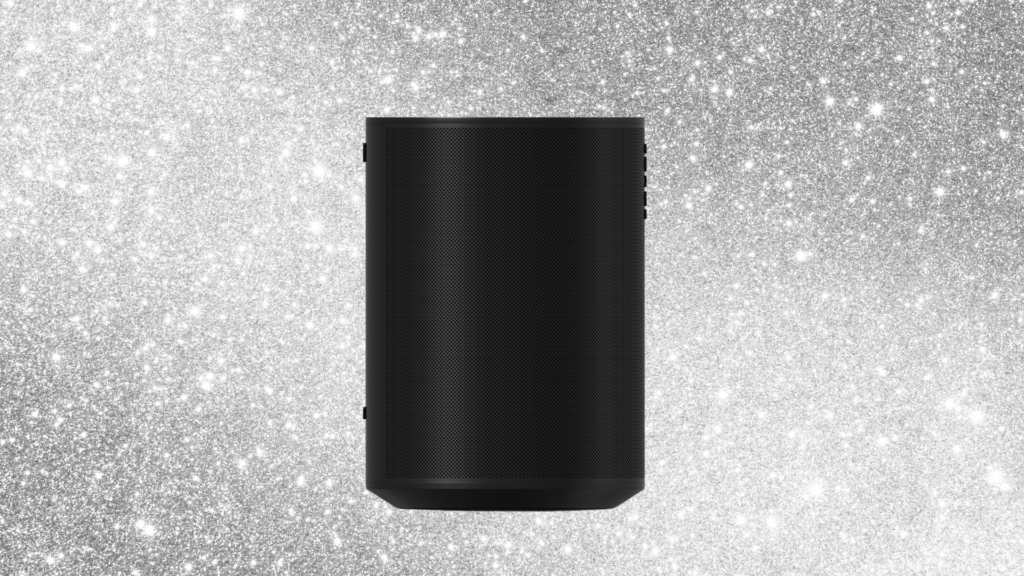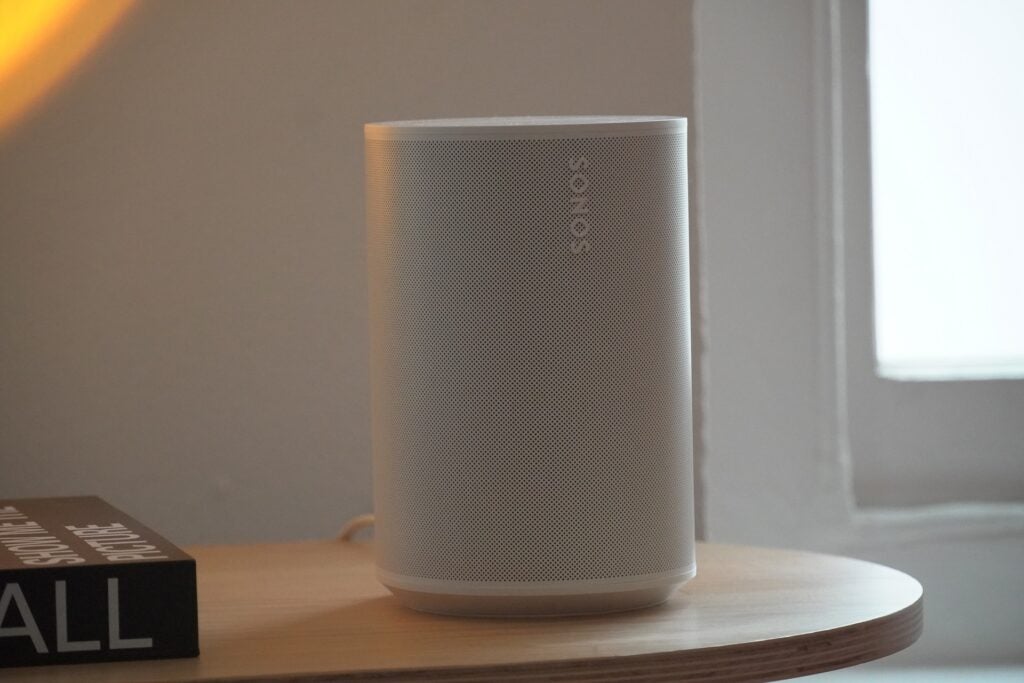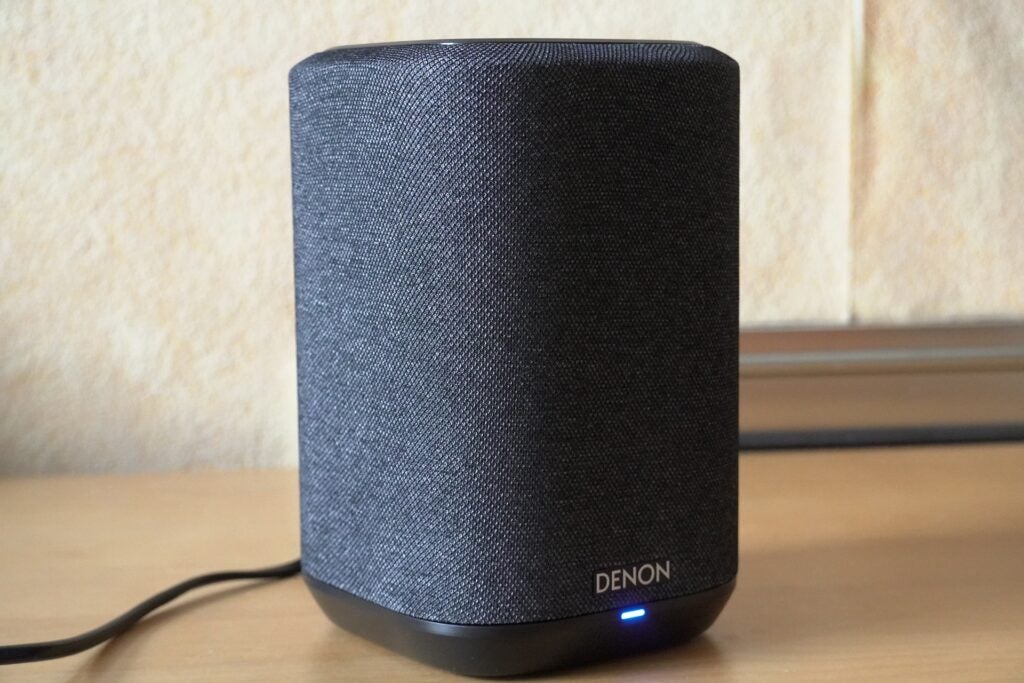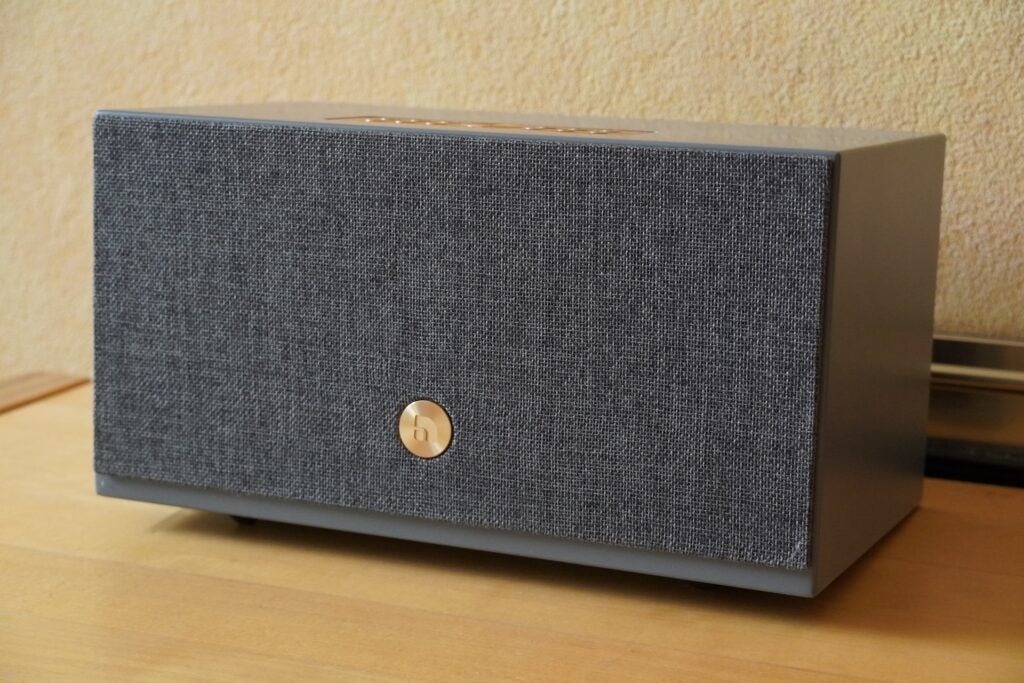
If you’re someone who likes to play music around the room with ease, then you should consider a multi-room speaker
We test a number of wireless speakers every year that come multi-room capabilities. However, not every multi-room speaker will necessarily suit you. With that in mind we’ve picked a selection that can fit into either their own ecosystems or others starting at the low price of $99 / £99.
The criteria for these choices isn’t just about how they sound, though that forms the bulk of our assessment since who wants a poor-sounding speaker? We also take into consideration their feature set, how easy they are to use through their control apps, and which music streaming services they support.
We’re always updating this page as we test and review more wireless speakers. If you’re interested in other types of wireless speakers, check out our pages for best outdoor speakers, best smart speakers and our best Bluetooth speakers.
Best multi-room speakers at a glance
- Best iOS multi-room speaker: Apple HomePod mini – check price
- Best Sonos multi-room speaker: Sonos Era 100 – check price
- Best HEOS multi-room speaker: Denon Home 150 – check price
- Best Ruark multi-room speaker: Ruark MRx – check price
- Best Audio Pro multi-room speaker: Audio Pro C10 MkII – check price
How we test
Learn more about how we test wireless speakers
We play a lot of music, and we play it loud. We play it everywhere – in the house, in the garden, and even in the bath if a speaker is waterproof.
We don’t just listen to the speakers; if there are special features then we make sure we fiddle with them until we’re satisfied. Recently, some Bluetooth speakers have begun to get smart functionality with the integration of Amazon Alexa or Google Assistant, and as a result we’ve started speaking to our speakers as well.
Of course, it always comes back to the music. Speakers are tested by reviewers who have a love of music, a knowledge of sound quality, as well as a context of the market. We’ll listen to wireless speakers alongside similarly priced rivals, so when we recommend a particular model, it’s among the best you can buy for the money.
Obviously, we know not everyone has the same taste in music, so we won’t only test with the same perfectly mastered album, but with a variety of genres and file qualities, from MP3 to Hi-Res FLAC.
- Lovely design and build
- Excellent sound
- Wealth of connections
- Flexible placement
- The app can be a little sluggish
- Fun, energetic, dynamic sound
- Great looks
- Supports Apple, Google multi-room
- A little short on overall clarity and definition
- Struggles to describe with more complex tracks
- Enjoyably bombastic
- Big sound
- Smart looks
- Now with native voice support
- Sonos One strikes a better balanced sound
- Sound incredible
- Very small
- Great price
- Decent voice control
- Captive cable
- Very reliant on Apple services (for now)
- More emphatic bass delivery than the One
- Quick Tune Trueplay
- Supports Bluetooth connectivity
- Wider sweet spot
- Excellent app interface
- Hike up in price
- Arguably too bassy
- No adapters included with speaker
Apple HomePod Mini
Best multi-room speaker for iOS users
Pros
- Sound incredible
- Very small
- Great price
- Decent voice control
Cons
- Captive cable
- Very reliant on Apple services (for now)
You might think we’d opt for the HomePod 2 for this list, but for multi-room listening we’d put forward the HomePod mini as the best for iOS users. It’s much cheaper at £99 / $99, which means you could stock up on a few to add to a house.
Like its bigger sibling, the HomePod mini looks great in any setting. Available in a range of colours, you can find a look that suits your tastes and décor. It’s even smaller than the Echo Dot 5th Gen model and weighing 345g, the mini is lighter and easier to store around the home than the HomePod 2.
You do need an iOS device to set it up, and it comes with a captive cable, which our reviewer was not fond of as if it were to get damaged, the whole unit would need to be taken back for service.
Multiple updates have added new features but the HomePod mini remains an iOS-centric device. Apple Music offers the best integration in terms of music services with direct control from another device, especially when playing music to multiple devices. With Spotify, it’s restricted to one track at a time whereas with Apple Music you can play different songs on different speakers. However, Apple has opened up third-party control to the likes of Amazon Music and Pandora. We’d like to see the likes of Spotify and Tidal make the cut too.
The sound output of the HomePod mini belies its size. It generates a big sound from its small enclosure, with good bass output and a balanced performance across the frequency range. There’s not as much detail as there is on the HomePod 2, but for a speaker of this size, this is a capable-sounding effort, at times subtle and at other times able to dig into a bass heavy track with relish.
It can reach a high volume, able to fill any room but still maintain clarity, and if you get a stereo pair the HomePod mini sounds even better. Consider you can buy two mini speakers for less than a Sonos Era 100 and this speaker is one of the best bargains around – as long as you’re an iOS user.
Reviewer: David Ludlow
Full review: Apple HomePod mini

Ruark MRx
Best Ruark multi-room speaker
Pros
- Lovely design and build
- Excellent sound
- Wealth of connections
- Flexible placement
Cons
- The app can be a little sluggish
Ruark make some excellent retro-inspired speakers and the MRx is an outstanding wireless speaker. At £400 the MRx is an expensive speaker, but if you’ve got the budget, we feel it’s a wireless speaker candidate you should consider.
The retro styling here isn’t tacky, setting a benchmark for how to blend modern features with a retro aesthetic. We particularly its wooden outer shell, combined with a fabric speaker grille that overall looks incredibly smart.
Its Rotodial control method may look a little unusual being placed in what looks like the middle of the speaker, but this means you can place it flat or standing up, giving you an extra level of flexibility. There’s an input to switch sound modes, and the provided stand can be attached in either orientation.
We found the connectivity to be pretty good, with both 3.5mm and optical output represented round the back, as is USB for playing music from thumb drives, and a power socket. In addition, the MRx also has aptX Bluetooth along with Wi-Fi, the latter allows it to work with Spotify Connect and DLNA support for playing music off network storage devices
The only niggle here is that the only method of control is through the Ruark Link app. It’s here where the MRx can be turned into a fully fledged multi-room speaker, as anything you play can also be outputted on another networked Ruark speaker, be it another MRx, or a Ruark R2 Mk3 or Ruark R7 Mk3.
During testing we found the audio to be both convincing and precise, backed by plenty of power. It’s a substantial and big-sounding speaker sounds coherent across the frequency range, with rich bass, clear mids and sweet treble. We also found the sound here to be room-filling, which is impressive from such a small unit.
Reviewer: Ced Yuen
Full review: Ruark MRx

Sonos Era 100
Best Sonos multi-room speaker
Pros
- More emphatic bass delivery than the One
- Quick Tune Trueplay
- Supports Bluetooth connectivity
- Wider sweet spot
- Excellent app interface
Cons
- Hike up in price
- Arguably too bassy
- No adapters included with speaker
Sonos has long been a major proponent of wireless, multi-room speakers, and the Sonos Era 100 is one of its best speakers.
With the Sonos One effectively discontinued, the Era 100 has replaced. It’s a wireless smart speaker that boasts hands-free control from Amazon Alexa and Sonos’ own Voice Control but does not support Google Assistant. Regardless, we found the integration offered easy control, and if you don’t like voice assistants listening all the time you can turn them off completely.
There is also the Sonos S2 app, which we found to be clean and functional, making finding tunes a doddle. The breadth of music streaming apps supported in the app is huge, with Spotify, Qobuz, Tidal, Amazon Music, TuneIn and much more available. Support for AirPlay 2 allows the speaker to be paired with other compatible speakers, and you can group with other Sonos speakers such as the Move 2 or Beam Gen 2, plus there’s Spotify Connect and Tidal Connect, which adds more multi-room possibilities if you’re subscribed to those services.
As for its audio, the One produces a very good sound. It’s not quite as balanced across the frequency range as the Sonos One was, lacking a little subtlety in the midrange. But it does offer deeper and richer bass, solid mid-range and a more defined treble performance. The soundstage is wide and spacious, especially from such a small unit as we found no issues with it filling a room.
Reviewer: Kob Monney
Full review: Sonos Era 100

Denon Home 150
Best HEOS multi-room speaker
Pros
- Enjoyably bombastic
- Big sound
- Smart looks
- Now with native voice support
Cons
- Sonos One strikes a better balanced sound
There are multi-room systems other than the likes of Alexa, Sonos, and Apple; and Denon HEOS is such alternative. We’d rate the Home 150 as one of the better buys within a HEOS set-up, partly because of its size and mainly because it’s the cheapest Home speaker at £219 / $249.
That price undercuts the Sonos Era 100 too, and the Home 150 carries many of the same features as its Sonos rival. There’s built-in support for Amazon Alexa voice control (there’s Google Assistant compatibility too), along with AirPlay 2 (so you could add the Denon to an iOS-centric multi-room set-up as well); and via the HEOS app there is integration with music streaming services such as Amazon Music, Tidal, Deezer, and Napster. Spotify Connect is also enabled, allowing for another means of creating a multi-room audio system.
The HEOS app is a tidy, efficient looking interface; though we prefer the modern sheen and interaction of the Sonos app which feels much nicer to use. Hi-res audio is supported via USB with 24-bit/192kHz FLAC, WAV, ALAC, and DSD 2.8/5.6MHz supported.
The Home 150 can look slightly on the anonymous side but we reckon that’s the point, disappearing into the environment it’s in. We especially like the glass touch panel with proximity controls, it adds some class and elegance to the speaker’s aesthetics and usability.
The sound is rich and warm, but no less dynamic for it. Voices are richly reproduced, with plenty of weight and heft to the low frequencies and a bright performance with high frequencies. If you want a bigger, more powerful performance, there’s always the option of Home 250 and Home 350 units.
Compared to the Sonos Era 100 we find that the Denon sounds the more musical of the two, more fluid and expressive in its midrange delivery, though if you’re considering a speaker that can be used for parties, then the Era 100 packs a bigger punch.
Reviewer: Kob Monney
Full review: Denon Home 150

Audio Pro C10 MkII
Best Audio Pro multi-room speaker
Pros
- Fun, energetic, dynamic sound
- Great looks
- Supports Apple, Google multi-room
Cons
- A little short on overall clarity and definition
- Struggles to describe with more complex tracks
The Audio Pro C10 MkII is a great representation of how upgrading a speaker with a meaningful sequel can work out in a brand’s favour.
The C10 MkII brings with it some notable smart features in the addition both Apple AirPlay 2 and Google Cast streaming to an already packed set when it comes to connectivity. Alongside this, the speaker also has the power to work via Bluetooth, Audio Pro’s own multi-room system, and also RCA-in or a 3.5mm jack that you can a plug a turntable into and via the multi-room support, blast your vinyl music to other connected speakers. We found this vast connectivity to work in the C10 MkII’s favour, offering oodles of versatility for whatever ecosystem you’re in.
On the point of connectivity, the Audio Pro app here offers loads of options and is one of the most functional out there today. With it, you get access to good range of streaming services (Tidal, Qobuz, Amazon Music, Deezer) and internet radio, as well as EQ presets, for instance. The C10 MkII also plays well with other Audio Pro speakers for multi-room listening, as well as working with Apple and Google systems. Connection to other speakers is simple whether it’s pairing to another speaker in the Audio Pro app or grouping speakers together in Google Home or AirPlay.
In addition, the design has been slightly tweaked to offer a fabric front panel that can be removed magnetically, so you have the choice of either looking at this, or ogling at the exposed drivers. We found the C10 MkII to look stylish in both configurations, alongside feeling immensely sturdy build thanks. This is quite a big speaker, so we’d suggest you make sure you’ve got a decent amount of space to put it.
During testing, we found the audio on offer here to be particularly big and meaty with solid bass tones and a detailed and crisp top end to boot. The audio experience here is also subtle, with transitions from loud to quiet in orchestral soundtracks feeling nicely nuanced. As for soundstage, we found it didn’t extend above the four corners of the speaker but nevertheless its sense of timing and energetic flow of its delivery makes for a fun-sounding speaker.
Reviewer: Kob Monney
Full review: Audio Pro C10 MkII














